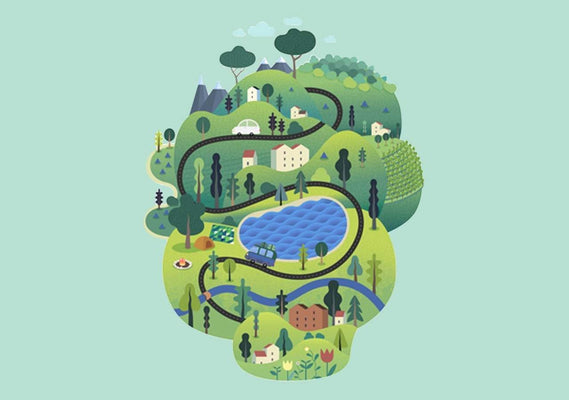This is contentious. Many brands claim to have sustainable bamboo clothing. However the determining factor is really dependent on the manufacturing process used. There are several ways to manufacture bamboo fabrics, all with varying degrees of pros & cons relating to being eco-friendly and sustainability. In some instances bamboo clothing can be just as harmful to the environment as its other fabric counterparts. Let's dive into the ways bamboo is turned from plant into bamboo fibres and then into clothing.
What is the difference between bamboo linen, lyocell & rayon?
There are three ways of turning bamboo into a fibre which then can be used in the production process of creating clothes.
Rayon production process
Bamboo rayon is made through the viscose process. The cellulose material, in this instance bamboo wood chips, are dissolved in a chemical solution containing sodium hydroxide, sulfuric acid & carbon disulfide.
This produces a viscous bamboo wood pulp substance. The pulp is then spun into bamboo fibres which then be configured into fabric and used to make clothing such as bamboo socks or bamboo underwear.
This is where bamboo falls down as a sustainable material. The carbon disulfide used in the rayon process can be quite harmful to not only the environment but also to toxic to the workers involved. How manufacturers handle this waste can determine just how "sustainable" and environmentally friendly the product is.
Several governments now force companies to state whether the the bamboo product is rayon as the consumer deserves to know.
Rayon production process
Lyocell fibre or commonly known as Tencel fibre is a semi-synthetic fibre known for its softness and breathability. The processing takes place over 9 steps.
- Hardwood such as bamboo or oak are broken down into chips and loaded into a vat to soften
- Pulp is then washed and in some instances sanitised
- The wood pulp is then dissolved in heated vats of amine oxide to dissolve the cellulose
- Once the cellulose had dissolved into a liquid form, it is then filtered and pumped through spinnerets
- The solution is put through a spinning process turning the liquid cellulose into cellulose fibres
- These fibres are then washed and returned to a vat of amine oxide to set
- Once set, the bamboo lyocell fibres are dried and lubricant is applied
- From here the fibres are carded which helps to separate and order them into a useable consistency
- Finally the lyocell bamboo fibres are cut to suit whatever bamboo clothing they will be used
Lyocell is considered a more environmentally friendly process than the rayon process purely because the chemicals are less harsh and not as toxic. That being said, it's important that the manufacturer uses a closed loop system. This ensures chemicals are correctly handled and disposed of. The manufacturing process for our bamboo sheets utilises the viscose method. When deciding on a manufacturer, we actively avoided rayon based on its harsh chemical treatment.
Mechanical process (bamboo linen process)
This process is the same eco-friendly one used to produce linen from flax or hemp. The wood parts of the bamboo plant are crushed mechanically. Natural enzymes are then used to break the bamboo down into a mushy mass whereby the cellulose fibres can be spun into a yarn in a similar process listed above. The end result is bamboo cloth ready to be used as a textile. Bamboo linen is commonly used in bamboo bedding products.
Mechanical process results in minimal pre-treatment, which is a massive sustainability advantage compared to lyocell and rayon. The process is very labour intensive and is why you don't see as much bamboo linen on the market compared to rayon and the growing lyocell market. This process produces truly sustainable bamboo clothing but at a much higher cost.
















